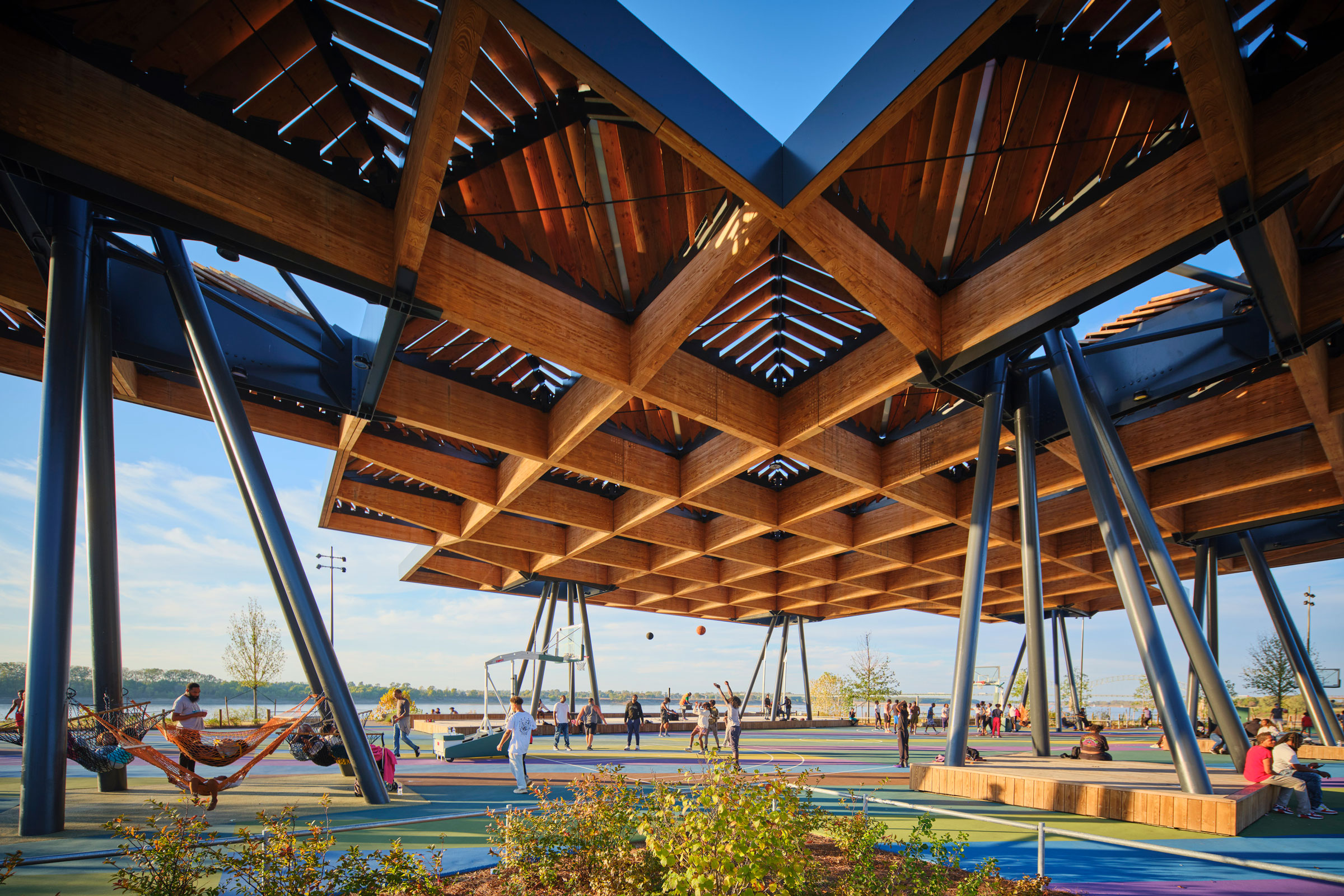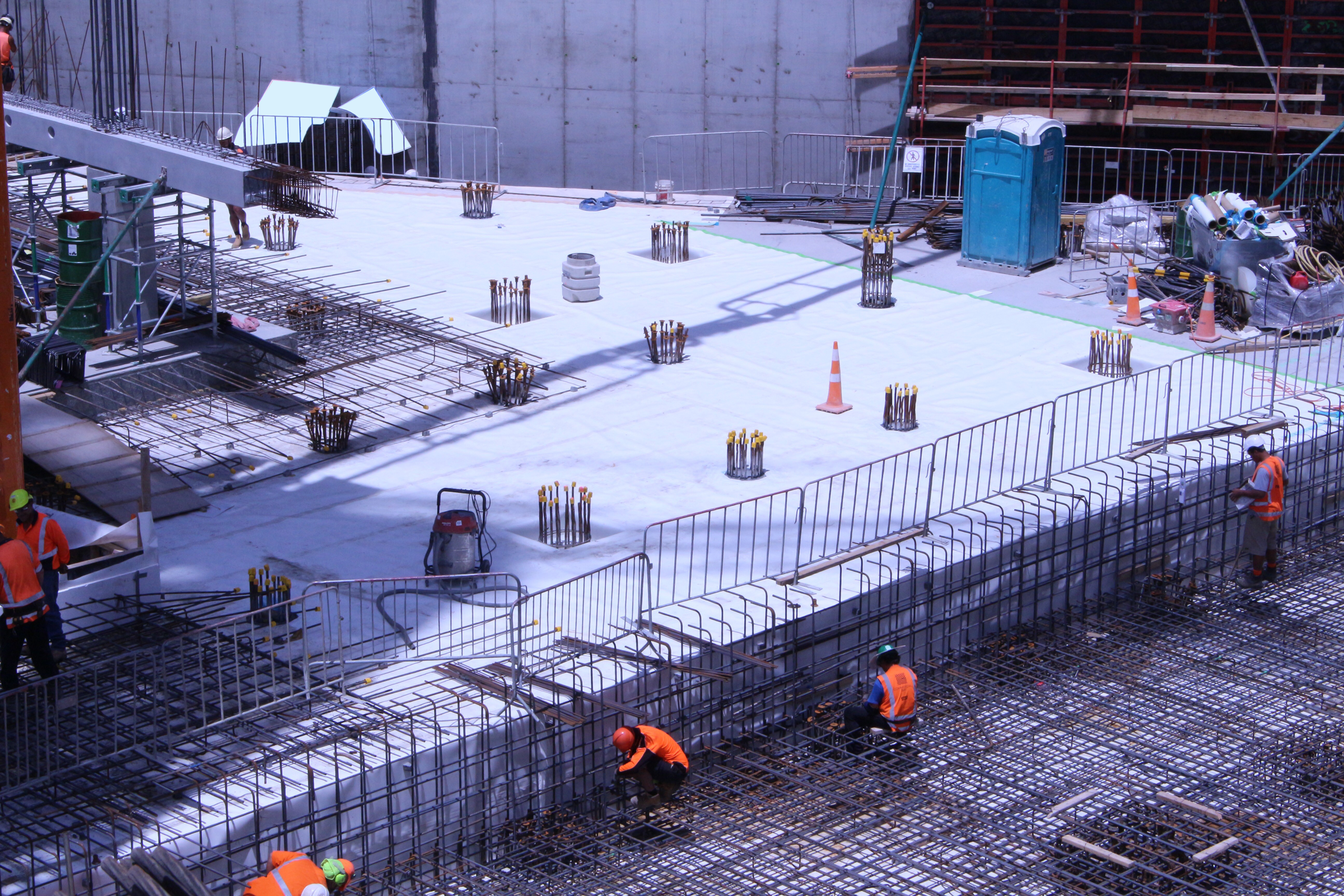Story at a glance:
- One of architecture’s most renowned architects shares her hopes for the future of design and architecture.
- Projects like Tom Lee Park in Memphis showcase creative strategies for bringing people together.
The phrase “designing for connection” is something I’ve heard tossed around more recently. When I stop to think about it, I have to ask: How do you design for connection? And is that more difficult today than 20 years ago? It seems to me like a big ask, especially in recent years, when so many of us feel disconnected, some of us even afraid of each other.
When I got the opportunity to sit down with Studio Gang Founding Partner Jeanne Gang, whose projects take great pride in bringing people together, I had to ask: What does it mean to you to design for connection? I wanted to know: What did she think was architecture’s role in bringing people together?
Connection Points
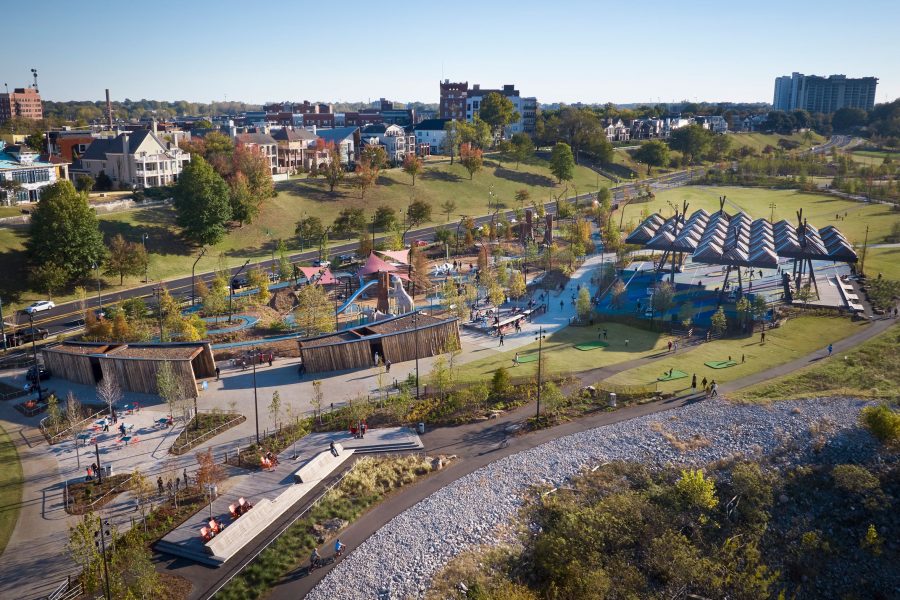
Completed in 2023, Studio Gang designed Tom Lee Park in Memphis to tie into a city-wide network of riverfront walking and biking trails. Photo by Tom Harris, courtesy of Studio Gang
From the iconic Aqua Tower in Chicago to Spelman College’s new Center for Innovation & the Arts, the adaptive reuse of the Gray Design Building at the University of Kentucky, and Populus in Denver, Studio Gang’s projects inspire awe while themselves being inspired by human connection and nature.
“I think one of the problems is that people have so much entertainment and control over different things with their phones, so a lot of times, when you see a picture of public space, you see a lot of people sitting around looking at their phones,” Gang says. “It’s like they’re almost isolated within a public space. I don’t think that’s a good thing.”
People need to be able to empathize with people who are different from themselves, she says. “That’s what we need right now in our society. Architecture can begin to set the stage for these interactions—interactions that can provide more comfortable ways to understand human behavior. We don’t want to put people in a situation where they feel uncomfortable but provide a place where they feel relaxed enough to be able to have a conversation with someone they maybe don’t know.”
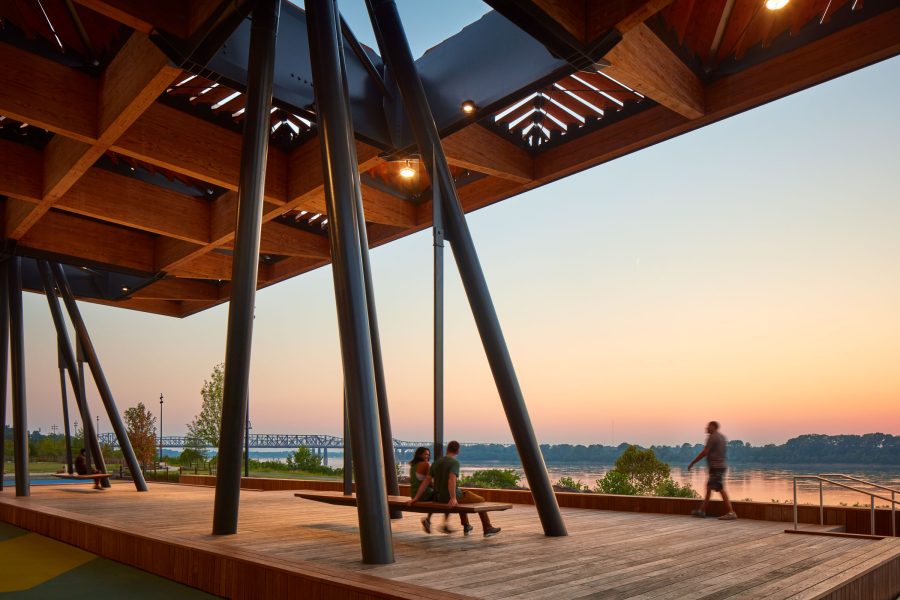
Studio Gang designed Tom Lee Park to include many different types of seating, including a large swing people can sit on together. Photo by Tom Harris, courtesy of Studio Gang
Tom Lee Park is one Studio Gang–designed example of this in action, completed in 2023 in Memphis. “This is a park for everyone,” she says. “From visitors outside Memphis to people living within Memphis, from all different parts of the city.”
The firm set out to design the park’s shade pavilion to, number one, draw people in to a safe, beautifully designed place where they can get out of the hot sun. A nice breeze offers comfort, inviting people to stick around on warm days.
The design team also considered the different types of personalities who might be at the park—people who like to take center stage versus people who prefer to sit on the sidelines or even people-watch. On any given day the focus of the pavilion could change—it could be sports, it could be music. All around the perimeter are varied types of seating, including a large swing multiple people can sit on. “It’s a fun thing to do, and it’s big enough that it doesn’t feel awkward to be on there with someone you don’t know,” Gang says. “Then you’re kind of engaged in something; you’re doing something. We found that that worked really well in terms of bringing people together.”

The elevation perspective of Tom Lee Park in Memphis is shown here from the south. Drawing courtesy of Studio Gang
Developed in collaboration with SCAPE, the park’s design is informed by the flow of the Mississippi River. Multiple entrances tie into a city-wide network of riverfront walking and biking trails, creating direct connections to key civic assets and institutions like the National Civil Rights Museum and the future home of the Brooks Museum of Art. Between watching the river traffic, taking in the scenery, and enjoying varied experiences offered at the park, the design gives visitors a chance to interact at multiple levels.
Architects can really engage with the community and give the people a feeling of ownership of a place that has a positive rippling effect. Gang shared a bit about why that’s important during a conversation in July at Aspen Ideas: Climate Chicago. “When there’s investment in a new building or something beautiful in the neighborhood, that really makes people excited. We can couple those investments with things that are important to our environment, like rivers or city centers. These are the kinds of things communities can get behind,” she says.

The Studio Gang–designed WMS Boathouse at Clark Park in Chicago is a launching point for kayakers and crew teams, but it’s also become an important meeting spot for the community. Photo by Steve Hall, courtesy of Studio Gang
She points to the Chicago River and its evolution over the years, from the Riverwalk to the Studio Gang–designed WMS Boathouse at Clark Park. The latter is a launching point for kayakers and crew teams, but it’s also become an important meeting place for neighbors who like to bike or walk in the area or sit by the water and the building’s inviting sculptural design.
“How do you inspire people to access it, to use it and feel like it’s their own? It’s almost like giving them permission to go there,” she says. “Then they slowly start to take on the behaviors of protecting that thing that they feel is their own. It’s really important to let people be part of the process, but also let them feel that it is their river, their resource. That really starts to shift things.”
Industry Challenges
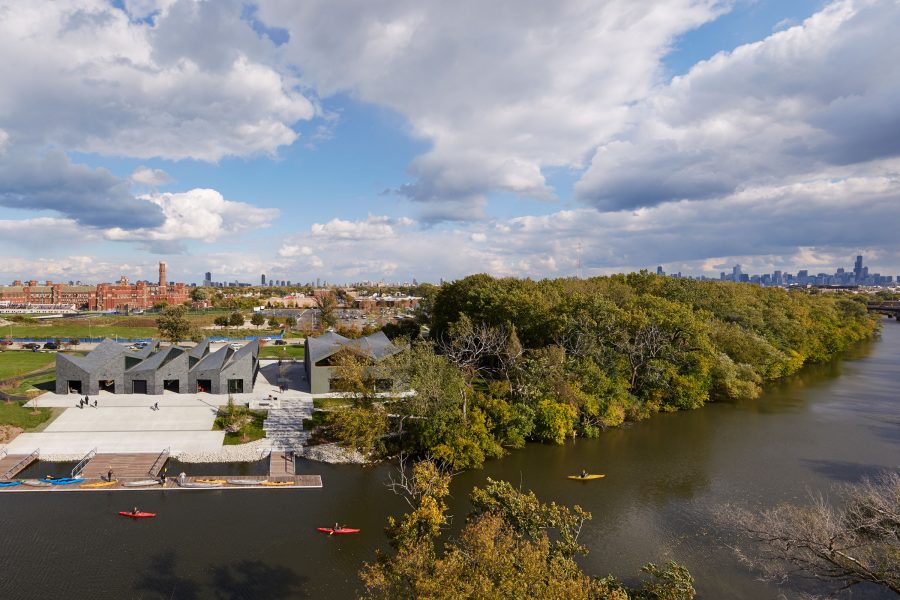
Studio Gang designed the WMS Boathouse at Clark Park in Chicago using a sculptural roof form, providing visual interest while offering spatial and environmental advantages that allow the boathouse to adapt to the city’s seasonal changes. Photo by Steve Hall, courtesy of Studio Gang
While some struggle to connect, Gang says the biggest challenges facing the industry right now are around new sources of clean energy and planning for zero carbon with sustainable materials. “All of those goals are being challenged and dismantled,” she says. “This is very disturbing, but you can’t give up. You have to keep moving.”
You have to meet the clients where they are, she says, and help them to understand that making a design more sustainable, resilient, and low-carbon makes for a better place to be in general. “I still think part of our role is to help to articulate that to our clients and to help move them forward,” she says.
AI is rapidly changing the industry, too, she says, acknowledging the pros and cons. While it can be a useful tool in the office, Gang says the energy it uses is a definite downside.
“The scary part is that I don’t think a lot of people are realizing or quantifying how much more infrastructure we have to build just to support this technology,” she says. “In a way you can’t avoid using it, right? It’s already in a lot of the tools we use, so it’s not like you can even choose in certain cases. I think it’s really important to start having these conversations about the powering of AI and how we get a handle on it. How do we control it? How do we make a transition so that clean energy is powering it?”
Inspired by the Past

Studio Gang Founder and Architect Jeanne Gang works toward a more sustainable future. Photo by John David Pittman, courtesy of Studio Gang
When Gang thinks back to her time in undergrad, she’s grateful for the hippie generation of professors she had in school. “They were really into solar energy and passive design and even plants on buildings and all those things. By the time I finished grad school, no one was talking about any of that stuff, but it was inspiring to me when I was first starting out.”
When she started her own office, she knew she would bring some of those strategies into her own work. “Those were good lessons early in my career. I’m glad I didn’t study under some certain other architects,” she says.
Gang also remembers a particular Paul Rudolph–designed building that was demolished with a wrecking ball while she was in school. “I went with some other architecture students to try to protest and save it, but to no avail.” It was a Brutalist building at the University of Illinois.
Today, in working with students at Harvard, she continues to talk about the merits of saving old buildings—even Brutalist ones. “Right now we’re looking at a lot of Brutalist architecture or concrete architecture because it’s at that moment when you could either tear it down or add another 50 years to this building’s lifespan. I’ve been trying to inspire them with those types of buildings.”
She likes to use the metaphor of grafting, a term that comes from horticulture and looks at taking existing rootstock and adding onto it with a scion, allowing them to grow and thrive as one. She applies this concept to her design philosophy in her book, The Art of Architectural Grafting, published in 2024. It’s not just preserving something from the past, but adding to it to open up new worlds of possibilities both aesthetically and programmatically, Gang says.
She looks at an existing Brutalist building as a project that certainly has its own character. “So how do you work with that to create something that maybe undoes some of the negative parts of how people perceive it, or creates a new part that then highlights the contrast between the two? How do you make them work internally together to bring new function, because reusing an existing building is going to save much more carbon than building a brand-new building. It’s probably 50 to 70% better on saving carbon if you reuse something, so it’s a good approach,” she says. “There needs to be a mindset shift in order to convince clients on things like that. That’s what I’ve been working on with the students at the moment because they’re going to have to go out in the world and make the case for these buildings and others.”

